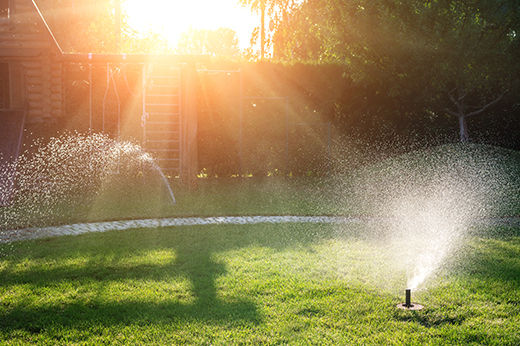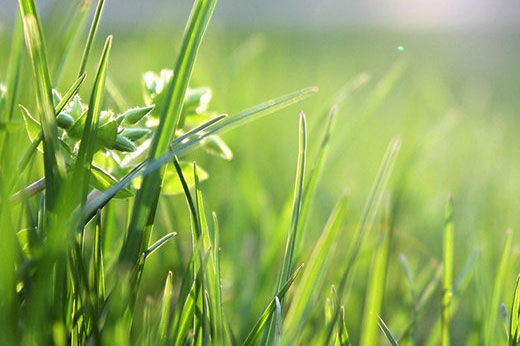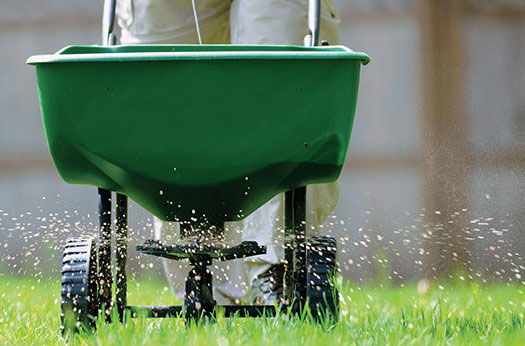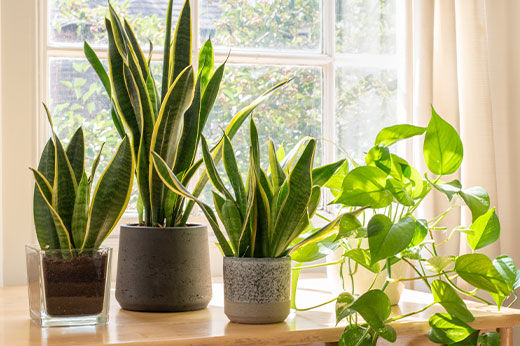How to Make Yardwork Easier with These 8 Tips
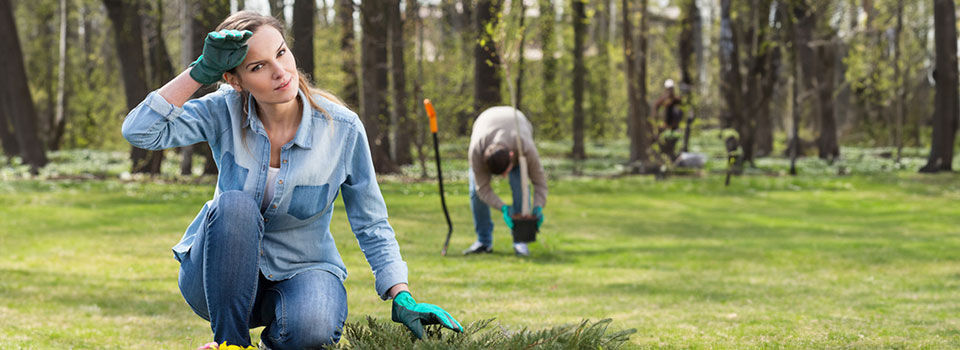
Every year as spring arrives, homeowners look out at their yards and think, "Ugh! I have to face all those yard jobs! How can I make yardwork easier?”
Never fear—we have tricks for yardwork help! Follow these tips to learn how to make yardwork easier this year with the right planning and tools for the job.
Why Yardwork is a Tough Task
You might dread yard work even if you enjoy having a beautiful yard. After all, it's time-consuming and frankly, it can be a little tough.
But if you’re starting to avoid eye contact with the neighbors because you know you have “that yard,” it might be time to stop procrastinating. Even if you have a large yard, there are tools, tips, and tricks to help you break down those tasks like weeding, fertilizing, trimming, and raking. With the right gear, you won't need to worry about blistered hands or a bad mood.
Often one of the reasons why people put off yard work is that they don't know where to start. Fortunately, you can prioritize your hard work and tackle a few big, high-impact jobs that will set you up for a summer of outdoor success.
Make Yardwork Easier with these 8 Tips
If you’re frustrated by yard work and want to make it safer and less strenuous, follow these tips. You might even discover that you enjoy yardwork more than you previously thought.
1. Plan Ahead and Organize

Planning ahead makes a huge difference in terms of any task, and yardwork is no exception. Start by taking a walk around your yard. Assess what needs to be done (weeding, moving debris, clearing out dead or dying brush) and what could be done (edging, mulch, fertilizing, and landscaping).
Once you've got a clear idea in your mind, write those tasks down and prioritize. Rome wasn't built in a day, and your yard won't be perfect in a weekend, so really focus on the must-dos first. View your yard as an ongoing project and aim to tackle a few high-impact tasks now.
Once you've got your list, consult your calendar. When can you fit in a few hours of yard work? Maybe you want to look for a weekend when you can make major headway on your yard projects, or you can block out 45 minutes to an hour after work on some nice spring weeknights.
Check the forecast before you block out too much time, though. A rainy weekend can put off your plans and give you more reason to procrastinate yardwork. If you want to get it done, commit, and block out a few different weekends to avoid extreme temperatures and bad weather.
2. Stock Up on the Best Yard Tools
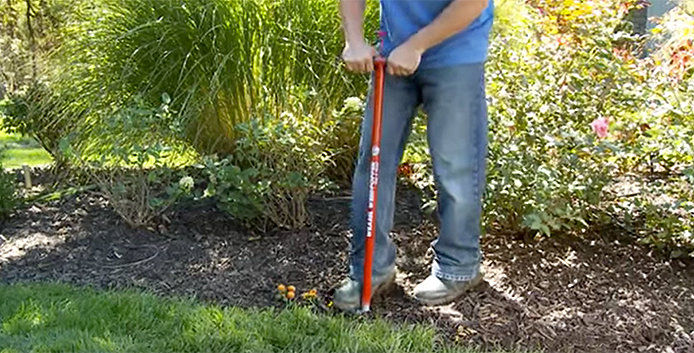
If this is the year you finally tackle your yard work, you'll need a few basic yard tools to get started. Every job is easier with the right tools. So what are the must-haves when it comes to yardwork help?
The best yard cleaning and yardwork tools really depend on your yard size and needs. For example, you may not need many large tools if you have a very small patch of grass and a flower bed. On the other hand, if you have a big lawn, you may want to consider investing in a riding mower.
In general, the basic yardwork tools you will need include:
- A rake
- Work gloves
- Hand tools such as a trowel and cultivator
- A shovel
- A garden hose
- A lawn mower
- Bins and bags
Of course, there are many additional tools and items that will make yard tasks easier. For example, a good set of gardening sheers or pruners, a step ladder, and even knee protection can make yard jobs more comfortable. A weed trimmer and edger can also help make yardwork easier.
3. Organize Your Yard Tools
If you’re not starting your yardwork from scratch, you can assess what you already have on hand. After winter storage, yard tools may seem a little worse for wear. It's important to inspect and review what you have, as well as keep it organized.
Use a tool sharpener to refresh the edge if your shovels look dull or rusty. You should store tools in a safe, clean, dry spot in your garage or shed. But sometimes, they can get damaged over a wet, cold winter. Check out the wooden handles to ensure they're solid without any signs of rot or degradation—a broken handle can cause injury. Replace any item that seems past its prime.
Check your hose for leaks and any damage sustained during winter storage. You may want to store your hose in a specialty hose box with a reel. Proper storage will keep your garden hose and watering accessories up to par.
As for your lawn mower, hopefully, it was cleaned and properly stored over the winter. It’s always best to perform a tune-up on your mower in the spring. Ensure the oil and filters are clean and the blades are sharp for optimal use.
4. Go Cordless
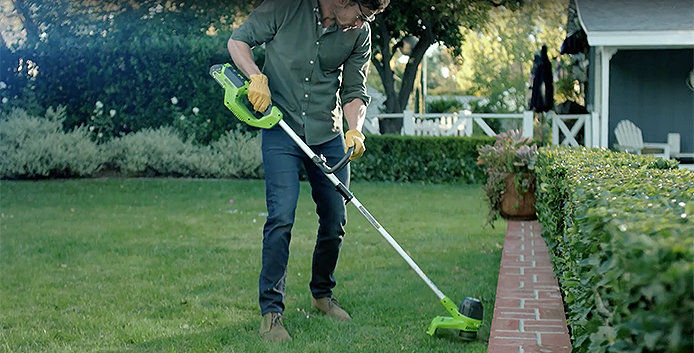
When you decide on the new tools you might need for your spring yardwork, consider cordless options. Are you wondering if you've mixed the correct fuel-to-oil ratio for a 2-cycle leaf blower? Are you tired of the noise and risk associated with corded tools? Are you unsure of performing all the gas and oil maintenance?
To avoid all those yardwork stressors and headaches, consider going cord and gas free! If you've tried battery-operated tools in the past and felt that they underperformed, you may want to consider them again. Today’s tools last much longer and hold a charge well. Technology has vastly improved the battery-operated yardwork tool experience.
Not only are battery-operated tools easier to use and maintain, but they are often less expensive, with no gas or oil to replace. What's more, there's no risk of accidentally running over a cord with your lawnmower or weed trimmer. Cordless tools are often safer for all.
5. Don’t Overextend Yourself
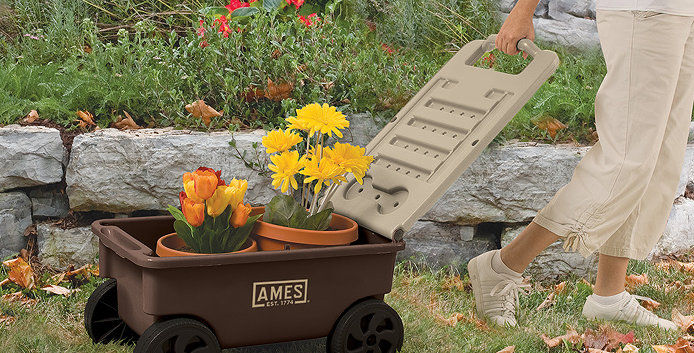
One reason yardwork becomes dangerous and arduous is that people tend to overextend themselves in several ways. First of all, any time you introduce height to a task—like trimming a tree branch or clearing rain gutters—you’re adding the risk of additional accidents and injuries.
When something needs to be done up high, don’t take risks by precariously balancing on a ladder (and stretching to reach your target). Remember that the rules of ladder safety mean that it’s a two-person job. Each time you need to reach, climb down, and move the ladder to the next spot and make sure you have a friend there to spot you.
Similarly, you know your body’s limits. Pace yourself with your yardwork and use the right tools for the job. Tackle a few tasks at a time, especially if they’re physically strenuous or if it’s hot outside. Keep in mind, too, many products have telescoping poles and wands. These are some of the best yard tools for tall jobs, as they let your feet stay firmly planted on the ground and your body out of harm’s way.
6. Protect Your Hands and Eyes
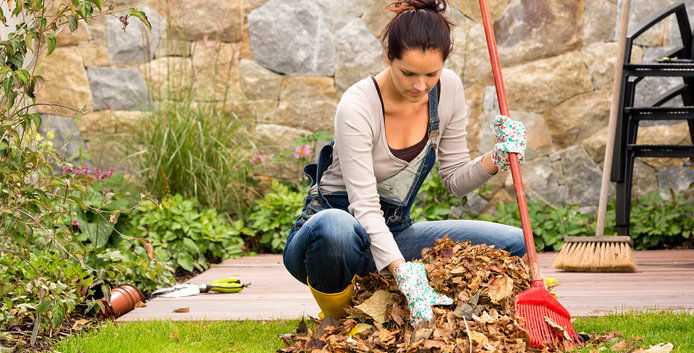
If the last time you picked up a rake was a year ago, you might have forgotten those horrible blisters you got. Unfortunately, no matter how careful you are, accidents can happen, especially around motorized yard tools, sticks, weeds, and sharp equipment.
Avoid blisters, burns, cuts, and irritation by properly protecting your hands with a nice pair of work gloves before heading out to do yard work. It's not just about protecting your hands from callouses and dirt but rather keeping you from sustaining injuries should you accidentally come into harm's way.
Similarly, wear safety glasses when working with any tools or equipment. A small rock or stick can easily flip up and cause an eye injury. When you’re working overhead, branches and debris can rain down into your eyes. Finally, keep yourself safe with eye protection—look for tinted options to shade your eyes from sunshine too.
7. Automate Whenever Possible
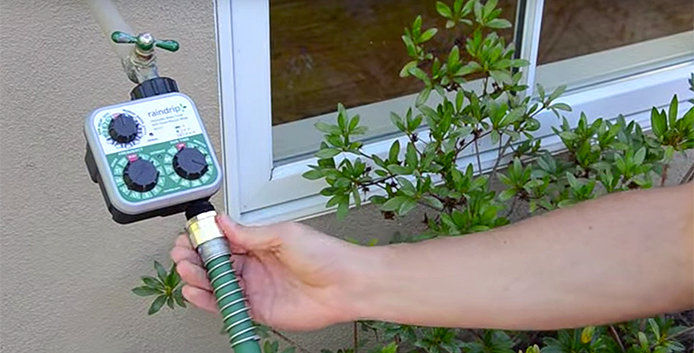
If you want to take the hassle out of yardwork, automate whenever you can. Something as simple as a timer on a sprinkler can make a huge difference. You won’t have to rush out to turn off the sprinkler or worry that you’ve forgotten to turn off the water.
Depending on the model you choose, you can have everything from a simple timer to shut off the sprinkler after several minutes or hours all the way up to a programmable schedule that completely automates your weekly watering operation!
8. Save Your Back
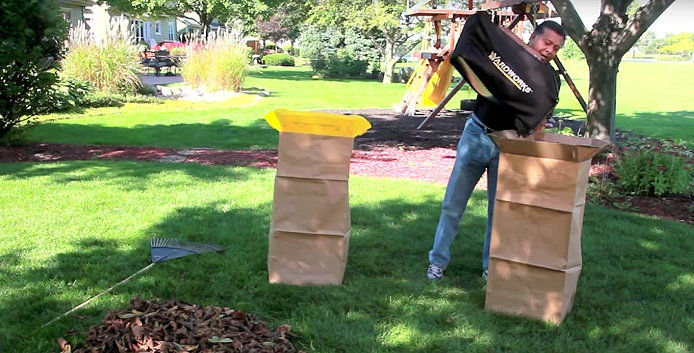
Back strain is a common concern when it comes to yard work. Save your back with a few ergonomic yard tools. For example, if you hate bending down to weed, consider switching to a stand-up weeder instead of a hand trowel. No longer will you suffer from a weeding-induced sore back because these tools keep you from bending and stooping to clear your garden of invasive plants.
Another great option to help your back is a non-collapsing leaf bag. Not only do these bags make yard cleanup easier, but you won’t need to struggle against the wind to hold open a sack and balance blowing leaves atop a rake. Instead, you can quickly and efficiently collect lawn clippings, yard waste, and more.
Another great option for saving your back is a garden cart. A rolling garden cart allows you to pull items alongside your work. You won’t need to stoop and bend, and you'll prevent back strain by easily carrying everything you need to weed and plant right on the cart.
With the right tools and equipment for yardwork, you’ll expend less effort and get an even better result. You will avoid injury and stress and feel the pride and satisfaction of having a beautiful, well-maintained yard. If you’re looking for the best yard tools, Do it Best has everything you need for a yard where you’ll love to spend time.
